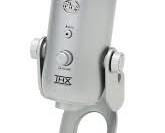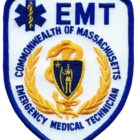There were few things that I have been more proud of than when I passed my EMT and paramedic exams. For the former, I was a 16 year old high school kid. I was taking my EMT class two nights a week while going to high school during the day. My parents had to drive me to my exam, and to the post office daily so I could check the mail hoping and praying that the right envelope would be shipped to me by the State of New Jersey. When I was in college, passing the paramedic exam was arguably the whole reason that I was there. That card would let me get my foot in the door, and my management education would give me the opportunity to climb the ladder when the chance arose. Medic school was not easy, but I did it. Coming out of medic school, I still had a lot to learn. I have talked about before here, but it took me a good couple of years to really feel comfortable in my skin. Colleagues who I got my medic with, and some who got their medics after me passed me by in a lot of ways, but eventually I caught up. The streets were a great place to hone my skills, and Springfield offered a lot of opportunity to do just that. It was busy, aggressive, and when I got in over my head, I was close to a hospital. A lot of people will say that EMS is generally like riding a bike. In the years that I was promoted, I still practiced medicine, but not nearly as much as I used to. When I moved exclusively back to the field it took me a little time to shake the rust off, but I got back to where I was relatively smoothly. I had practiced medicine before I got promoted, so when i got back to it, I had already laid the groundwork for my care. There are some out there who think that simply holding an EMT card in one’s pocket makes them an EMT, and I call bull on that. The things that one learns in...
The Podcast

We took the week off last weeks or Labor Day and this week the podcast is back with a short interview that I did on Jamie Davis’ The Medicast where we talk about the show and what it is all about. Regular shows will be back next week! Enjoy! To download the show in MP3 format, follow this link! Otherwise check the show out below: ...
Read MoreFor Leadership

Roughly twelve years ago, AMR and AEV’s Safety Concept Vehicle made its way to Springfield for us to take a look at. It included a number of interesting features like an expanded harness setup to allow providers to move a little more freely around the box while still being anchored. There were mounting brackets for cardiac monitors, and video cameras to monitor both the rear of the truck for backing up, and the passenger side to check for traffic before opening the curbside door. The vehicle itself contained a lot of positives that have been adopted over the years. I see more cameras used in emergency vehicles and I’m a a fan of the checkered or striped patterns on the backs of trucks to make them more visible to oncoming traffic. I have also seen a few more monitor brackets. But where is everything else? When is that ambulance of the future going to get here? Year after year at conference after conference, there will undoubtedly be some ambulance parked on the exhibit hall floor touting itself as the “ambulance of...
Read MoreFor the Field

There has been a lot of buzz over the past week about California’s EMS Bill of Rights. Dave Konig has a great take on it over at The Social Medic that I encourage you to read. American Medical Response has even launched a counter campaign to it complete with the hashtag #LivesBeforeLunch. While that makes me cringe a bit, I want to touch on one line of AMR’s response to the bill that stuck with me. “As written, AB 263 is an unprecedented political power grab, and will heavily penalize private – but not public – employers of EMTs and paramedics.” When I look back at my career with AMR that spanned more than twelve years, I had a lot of ups and downs. Had busy shifts and I had slow shifts. I found myself mandated to work despite being sick, or just needing a day off. Through the highlights and the lowlights of working in a busy 9-1-1 system that amassed roughly 40,000 calls per year, the instances where my 12 hour shifts hit double digits were rare when compared...
Read MoreLessons to Learn

Any time I peruse the pages of EMS related articles I will inevitably come across some service that is trying to take over another service’s area. Diving deeper into those articles usually reveals the same usual arguments. Imagine my surprise when I clicked on an article about the East Longmeadow Fire Department’s move to take over EMS response in the town of East Longmeadow. I should first point out that what I am about to write is meant to represent my own personal views on the state of the industry. I have not inquired about anything having to do with the current staffing of ambulances and volume. What I am reflecting on is the article and just the article coupled with my years of experience in the greater Springfield area. Just to give a little bit of background here, I used to have a dog in this fight. As many of you know, I was a 12-year employee of American Medical Response, the last seven of which as a supervisor. I participated in contract bids for the town, and saw service...
Read MoreRecent Posts
The Same Old Words, The Same Old Playbook

Jun 5, 2017
Any time I peruse the pages of EMS related articles I will inevitably come across some service that is trying to take over another service’s area. Diving deeper into those articles usually reveals the same usual arguments. Imagine my surprise when I clicked on an article about the East Longmeadow Fire Department’s move to take over EMS response in the town of East Longmeadow. I should first point out that what I am about to write is meant to represent my own personal views on the state of the industry. I have not inquired about anything having to do with the current staffing of ambulances and volume. What I am reflecting on is the article and just the article coupled with my years of experience in the greater Springfield area. Just to give a little bit of background here, I used to have a dog in this fight. As many of you know, I was a 12-year employee of American Medical Response, the last seven of which as a supervisor. I participated in contract bids for the town, and saw service improve as the requirements of those contracts increased. AMR currently provides EMS service to the towns of East Longmeadow and Hamden free of charge. The service is paid for by those who use it. They respond to more than 2,000 calls a year, and AMR or its predecessor companies have served the town for more than two decades. The East Longmeadow Fire Department is currently a part time department covering daytime hours only, with off hours supported by call staff and volunteers. Their Chief, Paul Morrissette, has spent his entire career in East Longmeadow. The East Longmeadow Fire Department does not provide EMS first response in town and even if they did, the ambulance would most likely beat them to virtually every call because they are deployed from street corner posting, quite often from the same area where the fire department is located. To put it briefly, neither Chief Morrissette nor the department currently have any experience operating an EMS service. In an article recently posted in The Reminder, a regional online publication, Chief Morrissette is quoted as saying, “AMR isn’t always familiar...
I’m Tired of the Narcan Debate
On an almost daily basis, an irrational, irritating debate seems to break out within the online EMS community. Typically it has to do with one of two topics, arming EMT and paramedics, and the debate on the ethical use of Narcan. While I would love to open two cans of worms today, there is only so much ranting that I would be willing to subject you, the reader to, so we are going to stick with the discussion on Narcan today. It is no secret that we are giving Narcan to patients at an alarmingly high rate. Compound that with the amount that the public themselves is using, and the number gets even higher. But there are some things that the EMS community needs to concede and understand about Narcan use, addicts, and ethics when it comes to administering the medication. Giving Narcan kills more people than it saves A few years ago, there was somebody who I will classify at this point as an “online EMS personality” who shared his thoughts on the use of Narcan, feeling that bringing addicts back over and over again would result in them pushing themselves closer to the edge because they knew that we were going to be there to save them. I shared my thoughts on that topic then, and my feelings have no changed because the evidence has not changed. There are a lot of things that are making the opiate addiction problem in this country worse, and EMS giving patients Narcan still is not one of them. Narcan is nothing new. It has been in our toolboxes for a lot longer than most of us have been in the field. And its not going away. “All that we are doing by making Narcan available to these people is enabling them to use heroin” This argument always leaves me scratching my head. Recently, I gave D50 to the same patient for the 5th time in two weeks. Once conscious, I asked them “did you go see your doctor like you said that you were last week?” Their response was, “I was going to but I did not have time.” I asked if they had plans...
If You Watch One Video. . .
In my defense, there are two videos posted below. These are the first two EMS Week videos created by a department that is very near and dear to my heart. Watch....
“Always in Service”

May 21, 2017
EMS Week 2017 is upon us and as always there are a lot of positives that need to be pointed out. Its a time to recognize the little things that people do, and more importantly the people behind the uniform. It is the week of the year that should be about us, because the other 51 weeks out of the year should be about the patients that we serve. With taking all of that into consideration though, this is not going to be one of those positive posts. Last week, there was a call for articles and posts related to the tagline “EMS Strong: Always in Service” for this week’s message to providers. It asked for people to talk about what it means to them. Well, here you go. I grew up in a heavily volunteer driven community. When I started EMS, every BLS unit on the street was staffed by people dedicating their time. Much like myself, many went through their day to day activities with a Minitor II pager strapped to their hip, waiting to hear that rhythmic beeping that still gives me palpitations more than 20 years later. Day or night, weekend or weekday, on school vacations or snow days, it did not matter. I was always in service. At the time, I was a young, naive teenage EMT. I was happier on the ambulance than I was on the high school basketball court. I did not care if I got home from my summer job at 2am, if the pager went off at 3, I was going. I did not have a care in the world. EMS was what mattered to me. I was always in service. In college, I sacrificed many Friday or Saturday nights where my college friends would be out drinking and partying to throw on a uniform, turn on the radio and go trucking out of my dorm to take care of the sick, vomiting, and ETOH students of Springfield College. I cleaned vomit off of my boots. I cared for people that I might see in my economics class come Monday morning. I was ready to go at a second’s notice. I was always in...




Recent Comments